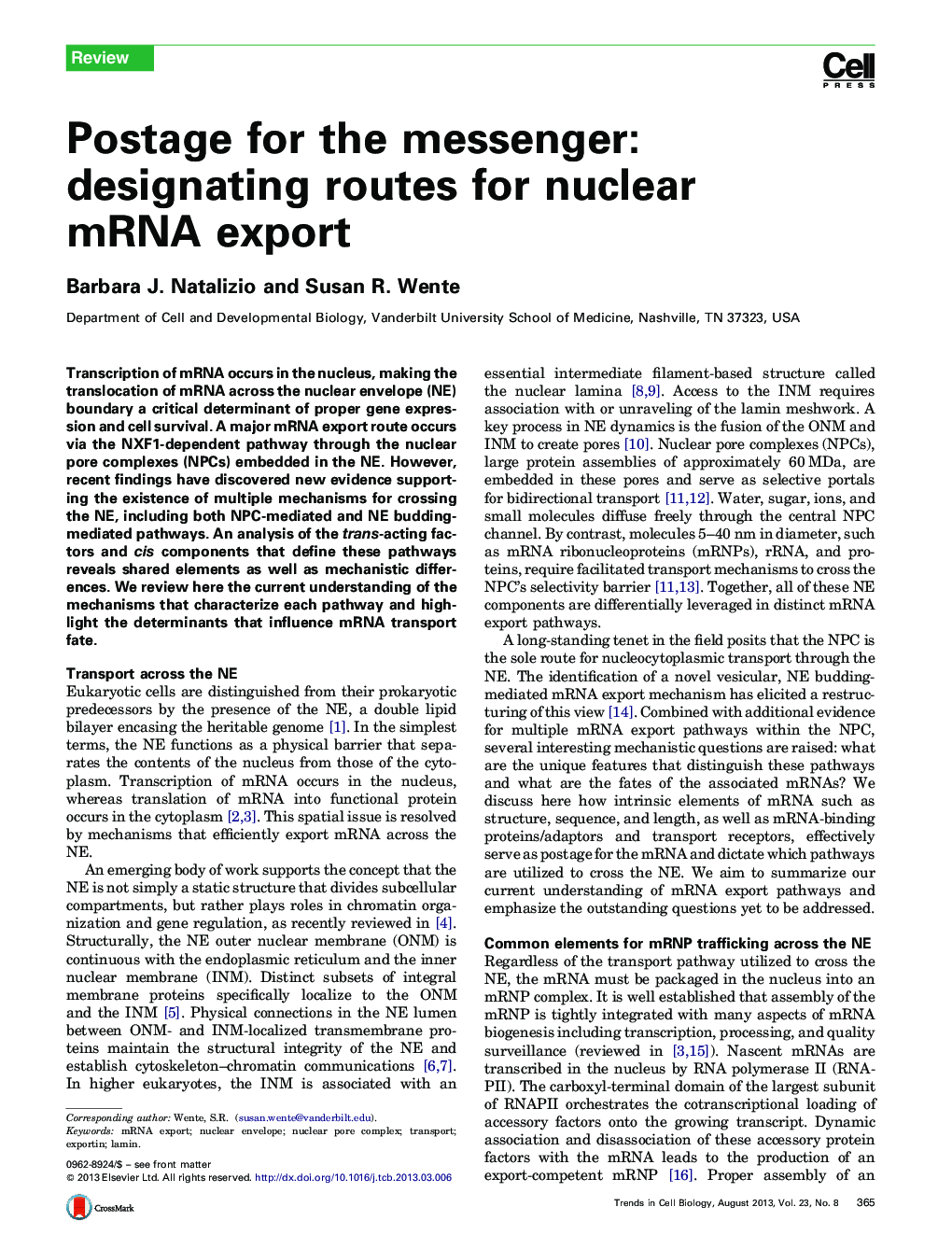| Article ID | Journal | Published Year | Pages | File Type |
|---|---|---|---|---|
| 2204464 | Trends in Cell Biology | 2013 | 9 Pages |
•Multiple mRNA export mechanisms exist utilizing both NPC and NE-budding pathways.•RNA-intrinsic elements and mRNA adaptors specify the mRNA export pathway.•Pathways are differentially regulated during stress, disease, and development.•Recent evidence suggests that these export pathways are functionally interconnected.
Transcription of mRNA occurs in the nucleus, making the translocation of mRNA across the nuclear envelope (NE) boundary a critical determinant of proper gene expression and cell survival. A major mRNA export route occurs via the NXF1-dependent pathway through the nuclear pore complexes (NPCs) embedded in the NE. However, recent findings have discovered new evidence supporting the existence of multiple mechanisms for crossing the NE, including both NPC-mediated and NE budding-mediated pathways. An analysis of the trans-acting factors and cis components that define these pathways reveals shared elements as well as mechanistic differences. We review here the current understanding of the mechanisms that characterize each pathway and highlight the determinants that influence mRNA transport fate.
